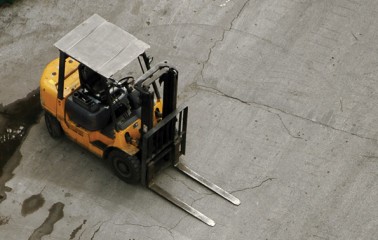Forklift truck safety

 Staff who are responsible for training forklift truck drivers have an important duty to ensure they stay safe. In much the same way, an employer has a duty to make sure supervisors are properly trained and competent if they are to protect their employees from the dangers associated with operating forklift trucks.
Staff who are responsible for training forklift truck drivers have an important duty to ensure they stay safe. In much the same way, an employer has a duty to make sure supervisors are properly trained and competent if they are to protect their employees from the dangers associated with operating forklift trucks.
Health and safety legislation
The Health and Safety at Work Act 1974 requires you, as an employer, to take steps that protect the health and safety of your employees and others while at work, as far as is reasonably practicable.
This legislation was put in place as a result of the thousands of forklift truck related accidents that are reported every year. These can result in severe injury, damage to equipment, and death, in addition to hefty costs to employers. The areas employers should pay attention to are the main causes of forklift truck accidents, which include:
- insufficient or lack of professional operator training
- premises that are inappropriate for the work involved
- substandard maintenance of equipment
Given the dangers of forklift truck driving, it is up to employers to carry out a full risk assessment of their forklift truck operations and to then introduce appropriate safe working procedures. The aim is to mitigate or reduce the risks as far as possible.
Statistics
The Health & Safety Executive (HSE) regularly publishes statistical information related to accidents in the workplace. According to the most recent statistics (September 2017), forklift trucks are involved in a quarter of all workplace transport related accidents, making them the most dangerous form of workplace transport in the UK.
Official figures indicate that forklift trucks injure more people than Large Goods Vehicles (LGV) or Heavy Goods Vehicles (HGV). Every year, some 1,300 employees in the UK are hospitalised with serious injuries as a result of forklift accidents, and the HSE says the number is continuing to rise. The injuries sustained are rarely minor and in fact can be extremely serious, including debilitating and life-changing damage, such as:
- amputations
- complex fractures
- dislocations
- deglovings
Employers’ training responsibilities
The Management of Health and Safety at Work Regulations 1999 places duties on employers to provide adequate and appropriate forklift truck training. The standard of training is governed by the Rider-operated lift trucks ACOP L117. The approved code of practice and guidance is free to download from the HSE website and applies whether you are using in-house trainers or an external company.
Among the options for external training organisations are voluntary accredited bodies, independent companies, and organisations providing quality assurance and awards.
To make sure the training being provided is sufficient, as an employer you should seek courses that cover these three stages:
- basic training
- task-specific training
- familiarisation training
The first stage teaches your employees how to operate a forklift truck efficiently and safely. Task-specific training adds a further layer of knowledge – helping your employees to understand how the forklift will be used in the workplace and what the controls and operating principles are. You can combine these first two stages, which should take place away from the workplace so there are no added pressures and no unnecessary hazards.
Finally, familiarisation gives your employees the opportunity to apply what they have learned in the workplace under close supervision. There is further information available in the ACOP L117.
Good practice indicates that employers should continue to monitor, test, and assess their employees, as well as ensure refresher training is available when required. Some companies offer training specifically for supervisors and managers.
Dangers in loading bays
When training is under way, specific dangers will be flagged up so that forklift operators and supervisors are aware of potential hazards. One example is the hazards of loading bays, forklift operators should never travel with a raised load, for instance, unless their truck is designed for this purpose. Beware of:
- attempting to transport loads that are unstable or unsuitable
- leaving a lift truck on a slope, except in case of emergency, in which case chocks must be used for the wheels
- overloading a forklift truck
- travelling with a raised load that blocks your view
- trying to turn on or travel across a raised slope
Case study: Forklift truck cause fatal injuries
Gareth Wilson, a delivery driver working for Mark Doel Transport was fatally injured by a forklift truck that had large coils dangling from the forks. In Cambridge Crown Court, Glynwed Pipe Systems was fined £1 million and ordered to pay costs of almost £28,000.
When the HSE investigated, it was found that Glynwed Pipe Systems had failed to manage workplace transport correctly in its yard, exposing both members of the public and its own employees to the risk of being hit. Work systems were also found to be unsafe, breaching regulations laid down in the Health and Safety at Work Act 1974. According to the HSE, more than 5,000 accidents every year involve workplace transport vehicles and, as recent statistics show, 25 per cent of these are caused by forklift trucks.
